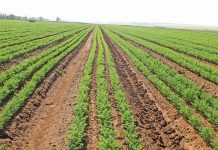
It’s 27 November, 1967, and a few far-sighted Lowveld avocado growers meet at Tzaneen to discuss the need for selling on the export market. In 1971, the South African Avocado Growers’ Association (Saaga) is formed – 1 880t of avocados are exported that season.
READ:Growing the European market for avocados
Meanwhile in Peru, a military coup installs General Bermúdez as president in 1975. That same year, SA exports 4 800t of avocados. Local growers start worrying about oversupplying the market. In Peru, military juntas institute aggressive land reforms. Farms become co-operatives owned by workers. Agricultural production plummets.
Nationalisation follows. New state-owned firms are created and expected to generate an important source of public financing. Instead, they immediately became a collective drain on the fiscus. A budget deficit of 1% in 1970 balloons to 10% in 1975.
By 1985, South Africa’s avocado exports reach 16 000t. In Peru, a shaky democracy has been installed and Alan Garcia wins the election. Economic chaos continues, however. The business sector is required to share profits with workers, and firms do all they can to avoid reporting profits. Workers in any case prove less interested in ownership than in their working conditions and earnings.
Change in the air
In 1990, Alberto Fujimori wins the election. Annual inflation reaches 5,49% per day! Back in South Africa, annual avocado exports have risen to 31 032t by 1995. Saaga is preoccupied with how to deal with the growing competition from Israel. In 1996, in Peru, the terrorist group MRTA takes hundreds of high-level guests hostage at the official residence of the Japanese ambassador in Lima.
In 2001, Alejandro Toledo wins the presidential elections; in 2003 he is forced to declare a state of emergency in response to a series of paralysing strikes. It’s now 2005, and South Africa exports 47 500t of avocados. The next year, Alan Garcia again becomes president and the Peruvian miracle begins. The disastrous socialist policies of previous governments are quickly reversed. The mining, electricity and telecommunications industries are privatised. Foreign investment and co-operation between the government and the IMF result in strong growth.
Take note
By 2014, Peru’s inflation was 3,2% and unemployment 6,8%, figures our government can only dream of. That year, South Africa exported 60 000t of avocados, while Peru exported 164 000t! Discussion in Saaga offices these days is dominated by how to counter the threat posed by Peru.
We in South Africa are experiencing the negative effects of policies reminiscent of those abandoned by Peru. As lessons in economics and human nature are learned by our political leaders, and as they are held accountable by the ballot box, here too we shall see changes happening very fast. Will you be ready to take advantage of our own South African miracle?
This article was originally published in the 21 August 2015 issue of Farmer’s Weekly.






